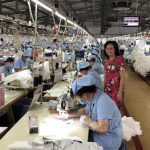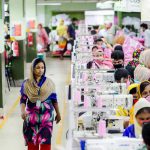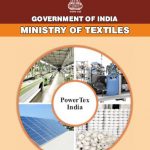 India and Bangladesh are two of the largest textile and apparel exporters in the world, with both countries having set a target of achieving $100 billion in exports in this sector. Bangladesh has set this target to be achieved by 2030 whereas India wants to achieve it ‘very soon’ without any time line. Both countries have different approaches and strengths in achieving this goal.
India and Bangladesh are two of the largest textile and apparel exporters in the world, with both countries having set a target of achieving $100 billion in exports in this sector. Bangladesh has set this target to be achieved by 2030 whereas India wants to achieve it ‘very soon’ without any time line. Both countries have different approaches and strengths in achieving this goal.
India has a more diversified textile and apparel industry, with a strong presence in both the traditional and modern segments of the sector. The country has a large and skilled workforce, a well-developed supply chain, and a wide range of raw materials available. India has also been focusing on increasing its production of high-value textiles and apparel, such as technical textiles, performance fabrics, and designer wear, which have higher profit margins.
During 2021-22, Bangladesh recorded an export turnover of $42.61 billion in the textile and apparel sector. The country has a large and low-cost workforce, which has made it a hub for low-cost RMG production. Bangladesh has also benefited from preferential access to developed markets like the EU and the US, which has helped it to increase its exports. To achieve its goal, Bangladesh has identified 13 items of clothing based on their world imports figures and the potential for Bangladesh in increasing its share in these items. This is a focused approach to achieving the target of $100 billion by 2030.
The global apparel market size is estimated to be around $1135 billion in 2030. So, one has to capture 10% of the world market to reach the $100 billion mark. Bangladesh will have to diversify into the man-made fiber products in a big way because 78% world’s garment market is of these items whereas 74% exports of Bangladesh are of cotton-based items. The demand for man-made fiber fabrics is increasing worldwide due to their affordability. Compared to natural fibers like cotton and wool, man-made fibers are generally less expensive to produce, which makes them more accessible to consumers in developing countries. Another growth factor of the MMF fabrics market is the increasing demand for technical textiles, which are fabrics that have specialized properties such as high strength, water resistance, and flame retardancy. These textiles are used in a range of industries, including automotive, construction, and healthcare.
In recent years, there has been a growing demand for sustainable and ecofriendly textiles and clothing, as consumers become more aware of the environmental impact of the industry. This has led to an increased focus on sustainable production practices, the use of eco-friendly materials, and the adoption of circular economy principles.
In terms of the race to achieve $100 billion in textile and apparel exports, India seems to have an edge over Bangladesh due to its larger size and a more diversified textile and apparel industry. The government has introduced various measures such as the Production Linked Incentive (PLI) scheme, which aims to boost domestic manufacturing and exports. Also, setting up of seven mega textile parks has been initiated. It remains to be seen which country will achieve the target first, but both countries are likely to continue to grow their textile and apparel exports in the coming years.
GD Jasuja
Managing Editor





